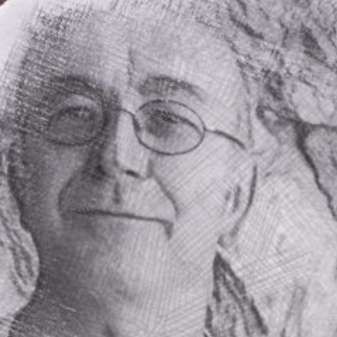If the presence of BBC Radio 3 and a huge audience occasioned any nervousness on the evening of Peter Oundjian’s first Edinburgh appearance as RSNO Music Director, it was well hidden. Weaving with boyish enthusiasm through the orchestra, a sporting spring in his step, he acknowledged the warm welcome before the orchestra dived into Glinka’s 1842 overture to Ruslan and Ludmilla.
This is a high-octane piece and this was a performance to match. Having led the Tokyo Quartet for 14 years, Oundjian’s string direction was unsurprisingly authoritative. Phrases were sculpted with left wrist work which I would describe as purposefully active without bring overly fussy. Although strings initially dominated melodic interest there was some fine wind writing also. This orchestral section were in great form and contributed magnificently across the programme. Timpanist Martin Gibson also shone, and this great opener (which was conducted from memory) was very warmly received.
Before embarking on the next work, Oundjian spoke with warmth and spontaneity about how delighted he was to be beginning his tenure as Music Director of the RSNO.
I’ve twice heard Tchaikovsky’s 1878 Violin Concerto live, and have learnt a lot on both occasions. The piece was originally spurned on the grounds that it was unplayable. That this evening’s soloist, Vadim Gluzman, plays the 1690 Stradivarius on which the work would have been premièred felt both a fantastic connection and, given the dates, a humbling perspective.
The triangular dynamic between soloist, conductor and orchestra has long fascinated me and I would say that Gluzman is perhaps the most collegiate soloist it has been my privilege to watch. In those moments where it was helpful he seemed to communicate far more than notes to Oundjian. Where it mattered most, like the opening of the second movement, it felt he was directing the director. This resulted in an almost pulse-free timelessness for Tchaikovsky’s achingly beautiful theme. One might imagine that an increase in players involved might reduce the temporal freedom which can clinch beautiful phrasing. However, such was the rapport of all involved that the full import of Tchaikovsky’s organic accompaniment lifted rather than pinned down the theme’s next appearance. Its final appearance, before the emergence of a contrasting theme, was beautifully handled by the wind section, especially Katherine Bryan and John Cushing, principal flute and clarinet respectively. From the point of view of the outer movements’ virtuosity, there seemed to be poetic justice in hearing Gluzman deliver with passion and panache the now vastly popular music from which Auer sought to protect his Stradivarius.
Oundjian’s prepared text on the closing work echoed important thoughts expressed by critic Michael Tumelty in the pre-concert talk. Shostakovich’s Symphony no. 11 in G minor, “The year 1905” ostensibly deals with the massacre of hungry peasants, peacefully petitioning the absent Tsar Nicholas II. However, the year of its composition, 1957, leads both to believe that the similarly brutal crushing of the Hungarian uprising one year earlier is a thinly veiled reference.
Four seamless movements portray the empty square in front of the Winter Palace, the gathering of the peasants, the massacre, a lament, and finally a “tocsin”, or alarm bell. This dark canvass unfolds over an hour and great pacing was shown by the RSNO in their delivery. Following such restraint, the passage depicting the massacre (which became known as Bloody Sunday) is truly infernal. Jarring, contrasting, dissonant themes and electrifying percussion fuel the mood. Shostakovich’s trademark cinematic snare drum work was excellently delivered. Equally chilling is the way in which the violence quickly subsides. An “In Memoriam” emerges featuring a song theme written soon after the shocking events. Later featuring two astonishing chord changes, this hauntingly harmonised lament showed the RSNO strings at their best.
Mood changes across the symphony were enhanced by very effective lighting. Starting in a half-light, suggesting the cloud-shrouded square, the piece ended in a sudden blackout as the final “tocsin” notes were smothered. Tumelty’s pre-concert remarks included a description of his initial puzzlement at the placing of an alarm at the end of a work, where one might reasonably expect resolution. However, 55 years after composition, it appears that Shostakovich’s warning about the likely repetition of such events was more realism than pessimism.
One of the strange things about a great performance of such a work is the incongruity of the darkness portrayed and the boisterous gratitude expressed for the quality of its portrayal. The audience erupted and sustained applause resulted in several curtain calls, during which the excellent individuals and sections who had contributed to this fine performance took their bows. I feel certain that Oundjian and the RSNO must have been very happy at the end of this concert.


